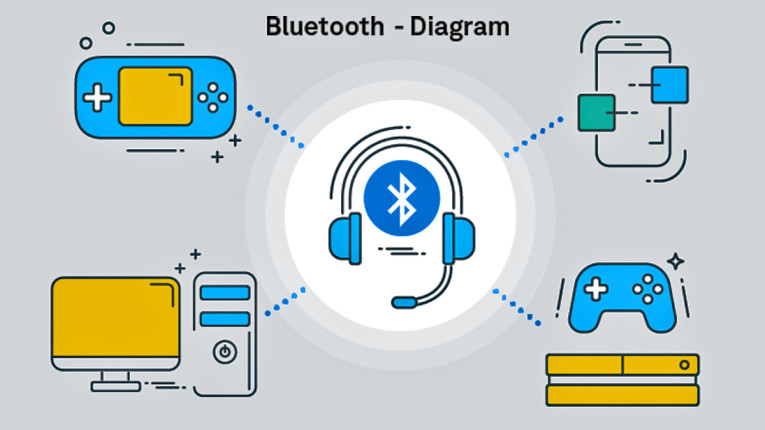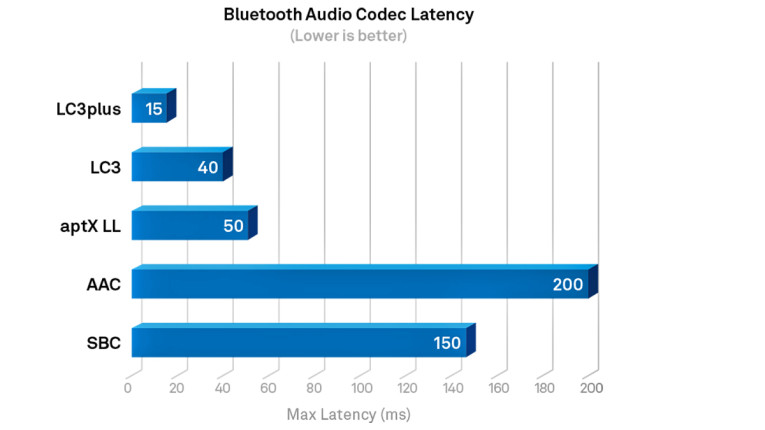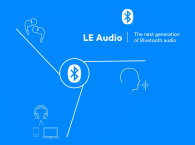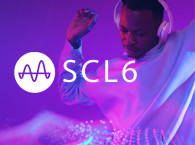LE Audio offers gamers real-time audio feedback for gunshots, footsteps, and explosions, without any noticeable delay. Add to that higher quality audio, or the same quality at even lower power for longer gaming on a single charge. The same low latency is also starting to generate interest in new ways to improve hearing aid experiences, for example, to clearly hear multiple speakers in a group setting. Bluetooth Low Energy plus LE Audio is creating exciting new product opportunities!

Market Opportunity
The market for gaming headsets from companies such as Razer and Turtle Beach is already estimated to be $2.3 billion and is expected to grow to $3.6 billion by 2028, for a CAGR of 7.5%. The gaming market in general is very healthy, driven especially by young players and perhaps recent promotion from game-centric movies, with analysts anticipating continued healthy growth.
A limitation today is lack of interoperability between gaming devices (gaming consoles, hand-held gaming devices, personal computers, mobile devices) and headsets. Standard Bluetooth audio platforms cannot offer low-enough latency for a good user experience. When you shoot an alien invader, visual response in the game is immediate but audio response noticeably lags at hundreds of milliseconds. Gaming product providers workaround this limitation through proprietary solutions, requiring you plug a platform-specific dongle into your gaming device and adding licensing margins for use of the proprietary solution.
A more competitive offering would build on standards-based end-to-end audio support at gaming latencies without need for proprietary hardware or software. The Bluetooth LE Audio standard provides that capability at BLE power efficiency, for example, in the CEVA Bluetooth Audio platform. That will empower faster and more diverse solutions for gaming headphones, interoperable with any platform supporting the LE Audio standard.

Audio latency for Bluetooth is determined by the audio codec. For Bluetooth Classic there are three commonly considered options: SBC, AAC, and Qualcomm aptX. Sub-band coding (SBC) is in effect a fast Fourier transform followed by a coding step and is the default for Bluetooth Classic. Latencies for SBC run around 100ms to 150ms. Advanced Audio Coding (AAC) is a widely used audio codec known for its efficient compression and good audio quality (somewhat better than MP3 encoders at the same bitrate). This codec is commonly used with Apple devices and is supported by some Bluetooth headphones. Typical audio latencies with AAC are around 150ms to 200ms, somewhat slower than SBC. The aptX Low Latency codec from Qualcomm is designed specifically to minimize audio latency, using time-domain ADPCM. aptX Low Latency compromises on audio quality while significantly reducing the latency, to around 40ms to 50ms. aptX has since been retired in favor of aptX Adaptive at 80ms latency. Use of either AAC or aptX is subject to license agreements.
For Bluetooth LE Audio there are two codec options. The big innovation is the introduction of the Low Complexity Communications Codec – LC3. This codec was initially developed by Fraunhofer and Ericsson and subsequently submitted to the Bluetooth SIG for standardization. Typical audio latency with LC3 is around 20ms to 30 ms. Further LC3 improves significantly in quality over the default SBC codec used with Classic Audio. Even when scaling down to low bit rates audio quality is generally rated far better than SBC. LC3 also promises lower energy usage through acceptable lower bitrates, and therefore longer battery life for applications where quality is already sufficient. As a component of the Bluetooth standard, LC3 is not subject to license agreements.
LC3plus, also developed by Fraunhofer and Ericsson, is a superset of LC3, providing capabilities for transmission robustness, extremely low delay use cases and high-resolution audio. Latency with this codec can run as low as 5ms, more commonly in the 10ms to 15 ms range. LC3plus has been standardized by the European Telecommunications Standards Institute (ETSI) rather than the Bluetooth SIG, which may limit appeal to some potential adopters.
Both LC3 and LC3plus can be implemented fully in software, ensuring future-proofing through software-only upgrades.

You might wonder what else can be done to improve the quality of life for hearing aid wearers. Bluetooth Low Energy already offers good battery life for hearing aids. LE Audio promises an improved hearing experience, again through improved latency. We all subconsciously watch a person’s mouth for reinforcing cues as we listen to them speak. For any of us, watching a video becomes painful when visual and audio stimuli are not well synchronized. The hearing-impaired depend even more on visual speaking cues to augment what they are hearing. Without close synchronization, listening becomes both confusing and tiring.
A further advance is even more exciting. Hearing aids today are very directional; a wearer can easily hear a speaker directly in front, but not speakers to the side. Group discussions are very challenging, say a group of family or friends around a table. A hot idea now is to place a small hearing assistance device in the center of the table. Anyone around the table can talk, the device will pick up what they say, just like a conference phone, and broadcast those inputs to LE Audio-enabled hearing aids, filtering out external noise as necessary.

New Markets Waiting for Innovators!
Bluetooth Low Energy low-latency gaming headphones and hearing aid conversation assist devices suggest a wealth of opportunity for new consumer devices building on BLE and LE Audio in already proven strong markets. As standards-based capabilities, carrying no royalties for use of proprietary solutions, there should be no limitations in market reach for product makers.
CEVA's Bluebud Bluetooth Audio platform integrates support for Classic Audio and LE Audio with Auracast support and a range of codec options together in one platform. If you want to learn more, contact us at CEVA to discuss your product needs.
This article was originally published in The Audio Voice newsletter, (#424), June 1st, 2023.






